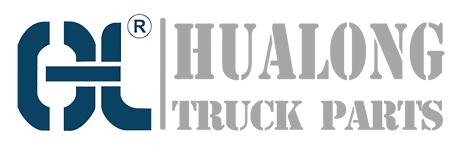Introduction
hydraulic cylinders double acting are essential components in various industries, providing efficient force and motion control. These versatile devices are used in a wide range of applications, from construction and manufacturing to agriculture and transportation. In this article, we will explore the key features, uses, and benefits of hydraulic cylinders double acting.
1. Understanding Hydraulic Cylinders Double Acting
Hydraulic cylinders double acting are mechanical actuators that use hydraulic fluid to generate linear force and motion in both directions. Unlike single-acting cylinders, which can only extend or retract, double-acting cylinders can exert force in both directions. This is achieved by using a piston and two separate hydraulic ports, allowing fluid to enter and exit the cylinder on both sides.
2. How Do Hydraulic Cylinders Double Acting Work?
When hydraulic fluid is supplied to one side of the cylinder, it pushes the piston, causing the other side to retract. Conversely, when fluid is supplied to the opposite side, the piston extends, and the other side retracts. This dual-action capability makes hydraulic cylinders double acting ideal for applications where both pushing and pulling forces are required.
3. Applications of Hydraulic Cylinders Double Acting
Hydraulic cylinders double acting are widely used in various industries and applications. Some common uses include:
- Construction equipment, such as excavators, backhoes, and bulldozers.
- Manufacturing machinery, including presses, injection molding machines, and material handling equipment.
- Agricultural machinery, like tractors, harvesters, and sprayers.
- Transportation vehicles, such as dump trucks, garbage trucks, and hydraulic lifts.
- Marine applications, including boat loaders, steering systems, and hatch covers.
4. Advantages of Hydraulic Cylinders Double Acting
Hydraulic cylinders double acting offer several advantages over other types of actuators:
- Bi-directional force: The ability to exert force in both directions allows for more versatile and efficient operation.
- Increased speed: Double-acting cylinders can often achieve higher operating speeds compared to single-acting cylinders.
- Improved control: The precise control of fluid flow enables accurate positioning and smooth operation.
- High force capacity: Hydraulic cylinders double acting can handle heavy loads and provide substantial force output.
- Durability: These cylinders are designed to withstand harsh conditions and offer long service life.
5. Selecting the Right Hydraulic Cylinder Double Acting
When choosing a hydraulic cylinder double acting for your application, several factors should be considered:
- Force requirements: Determine the maximum force needed to perform the desired task.
- Stroke length: Measure the distance the cylinder needs to extend and retract.
- Operating pressure: Consider the hydraulic system's operating pressure and ensure the cylinder can handle it.
- Mounting style: Choose a mounting style that is compatible with your equipment.
- Sealing: Select appropriate seals to prevent fluid leakage and ensure reliable operation.
6. Maintenance and Care
To ensure the longevity and optimal performance of hydraulic cylinders double acting, regular maintenance is crucial. This includes:
- Inspecting cylinders for signs of wear, damage, or leaks.
- Cleaning the cylinder and hydraulic system to remove dirt and contaminants.
- Checking and replenishing hydraulic fluid levels as recommended by the manufacturer.
- Replacing worn-out seals or other components as needed.
- Following the manufacturer's guidelines for lubrication and greasing.
7. Troubleshooting Common Issues
While hydraulic cylinders double acting are generally reliable, they can encounter problems. Here are some common issues and their potential causes:
- Slow operation: Low hydraulic fluid level, restricted flow, or worn-out seals.
- Leakage: Damaged seals, loose fittings, or excessive pressure.
- Uneven movement: Misalignment, bent piston rod, or uneven load distribution.
- Excessive noise or vibration: Loose mounting, worn-out bearings, or cavitation.
8. Safety Considerations
Working with hydraulic cylinders double acting involves potential hazards. Follow these safety guidelines to minimize risks:
- Always use appropriate personal protective equipment (PPE) when working with hydraulic systems.
- Ensure proper training and familiarity with the equipment and its operation.
- Release pressure and secure the load before performing maintenance or repairs.
- Regularly inspect hydraulic lines, fittings, and connections for signs of damage or leaks.
- Follow lockout/tagout procedures to prevent accidental activation of the system.
9. Choosing a Reliable Supplier
When purchasing hydraulic cylinders double acting, it is essential to choose a reliable supplier. Look for a company with a proven track record, extensive industry experience, and a wide range of products to meet your specific needs. Additionally, consider factors such as customer reviews, warranty options, and after-sales support.
10. Conclusion
Hydraulic cylinders double acting are indispensable components in various industries, providing bi-directional force and precise motion control. Understanding their features, applications, and benefits can help you make informed decisions and optimize your equipment's performance. By selecting the right hydraulic cylinder double acting and following proper maintenance and safety practices, you can ensure reliable operation and maximize efficiency in your applications.

